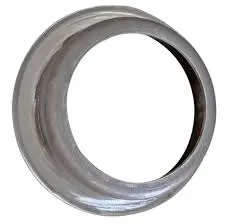- Afrikaans
- Albanian
- Amharic
- Arabic
- Armenian
- Azerbaijani
- Basque
- Belarusian
- Bengali
- Bosnian
- Bulgarian
- Catalan
- Cebuano
- China
- China (Taiwan)
- Corsican
- Croatian
- Czech
- Danish
- Dutch
- English
- Esperanto
- Estonian
- Finnish
- French
- Frisian
- Galician
- Georgian
- German
- Greek
- Gujarati
- Haitian Creole
- hausa
- hawaiian
- Hebrew
- Hindi
- Miao
- Hungarian
- Icelandic
- igbo
- Indonesian
- irish
- Italian
- Japanese
- Javanese
- Kannada
- kazakh
- Khmer
- Rwandese
- Korean
- Kurdish
- Kyrgyz
- Lao
- Latin
- Latvian
- Lithuanian
- Luxembourgish
- Macedonian
- Malgashi
- Malay
- Malayalam
- Maltese
- Maori
- Marathi
- Mongolian
- Myanmar
- Nepali
- Norwegian
- Norwegian
- Occitan
- Pashto
- Persian
- Polish
- Portuguese
- Punjabi
- Romanian
- Russian
- Samoan
- Scottish Gaelic
- Serbian
- Sesotho
- Shona
- Sindhi
- Sinhala
- Slovak
- Slovenian
- Somali
- Spanish
- Sundanese
- Swahili
- Swedish
- Tagalog
- Tajik
- Tamil
- Tatar
- Telugu
- Thai
- Turkish
- Turkmen
- Ukrainian
- Urdu
- Uighur
- Uzbek
- Vietnamese
- Welsh
- Bantu
- Yiddish
- Yoruba
- Zulu
Nov . 24, 2024 16:11 Back to list
Exploring the Benefits of OEM Investment Casting for Precision Manufacturing Solutions
Understanding OEM Investment Casting A Comprehensive Overview
Investment casting, also known as lost-wax casting, is an advanced manufacturing process that is widely used in various industries, including aerospace, automotive, medical, and more. This process enables the production of highly complex and precise components from various materials, making it an attractive option for Original Equipment Manufacturers (OEMs) looking for efficiency and quality in their supply chains. In this article, we will delve into the key aspects of OEM investment casting, its advantages, applications, and the process itself, providing a holistic view of this innovative manufacturing technique.
What is Investment Casting?
Investment casting involves creating a wax pattern, which is then coated with a ceramic material to form a mold. Once the ceramic is set and hardened, the wax is melted away, leaving a hollow cavity that matches the desired component shape. Molten metal is then poured into this cavity to create the final product. This method is known for its ability to produce high-precision parts with excellent surface finishes.
The Investment Casting Process
The investment casting process can be broken down into several key stages
1. Pattern Creation The process begins with designing a wax pattern that mirrors the final product. This can be done through various methods, including CNC machining or 3D printing.
2. Mold Preparation The wax pattern is then coated with a fine layer of ceramic material. This is achieved through a process called dipping followed by sand application to enhance mold strength.
3. Wax Removal Once the ceramic shell has been hardened, it is heated to remove the wax, which is recycled for future patterns.
4. Mold Firing The empty ceramic mold is further heated, which strengthens the mold and prepares it for pouring molten metal.
5. Metal Pouring After reaching the required temperature, molten metal is poured into the mold, filling the cavity formed by the wax pattern.
6. Cooling and Shell Removal Once the metal solidifies, the ceramic shell is broken away to reveal the cast component.
oem investment casting

7. Finishing Operations The final stage includes trimming excess material, surface finishing, and any additional processes required to meet specific tolerances and aesthetics.
Advantages for OEMs
OEMs often seek reliable manufacturing processes that conform to stringent quality standards while optimizing production efficiency. Investment casting offers several distinct advantages
- Complex Geometries The investment casting process can produce parts with intricate shapes that might be impossible or cost-prohibitive to achieve through traditional manufacturing methods.
- Superior Accuracy The process is known for its high level of precision, allowing for tighter tolerances than many other casting methods. This is vital in industries like aerospace, where even minor deviations can have significant consequences.
- Material Versatility Investment casting can accommodate a wide range of materials, including various alloys of steel, aluminum, and even exotic metals, allowing OEMs to meet specific performance requirements.
- Reduced Machining Due to the high accuracy of the castings, less post-casting machining is typically required, leading to reduced production time and costs.
- Lower Waste The process is resource-efficient, with minimal material waste as the wax patterns can be melted down and reused.
Applications of Investment Casting
Investment casting is employed across diverse industries. In aerospace, it is utilized for components such as turbine blades, gear housings, and structural parts that require exceptional strength-to-weight ratios. In the automotive sector, investment casting is used for making engine components, transmission housings, and suspension parts. Additionally, the medical industry employs this method for manufacturing surgical instruments and implants due to its ability to produce complex geometries with high sterilization standards.
Conclusion
As industries continue to demand higher precision, complexity, and customization in manufacturing, investment casting stands out as a viable solution for OEMs. Its unique advantages, ranging from minimal waste to the capability of producing intricate designs, make it a preferred choice for high-quality components. As technology evolves, the investment casting process is likely to see further innovations, enhancing its efficiency and broadening its application scope. For OEMs looking to optimize their manufacturing processes, understanding and implementing investment casting is a strategic move toward quality and performance excellence.
-
8mm Thin-Walled Cast Steel Manhole Cover Pallet Bottom Ring | Durable
NewsAug.04,2025
-
Premium Cast Iron Water Main Pipe: Durable, Corrosion-Resistant
NewsAug.03,2025
-
Durable Cast Iron Water Mains | AI-Optimized Systems
NewsAug.02,2025
-
High-Efficiency Propane Boiler for Baseboard Heat | Save Energy
NewsAug.01,2025
-
Premium Source Suppliers for Various Gray Iron Castings
NewsJul.31,2025
-
Durable Cast Iron Water Main Pipes | Long-Lasting
NewsJul.31,2025


